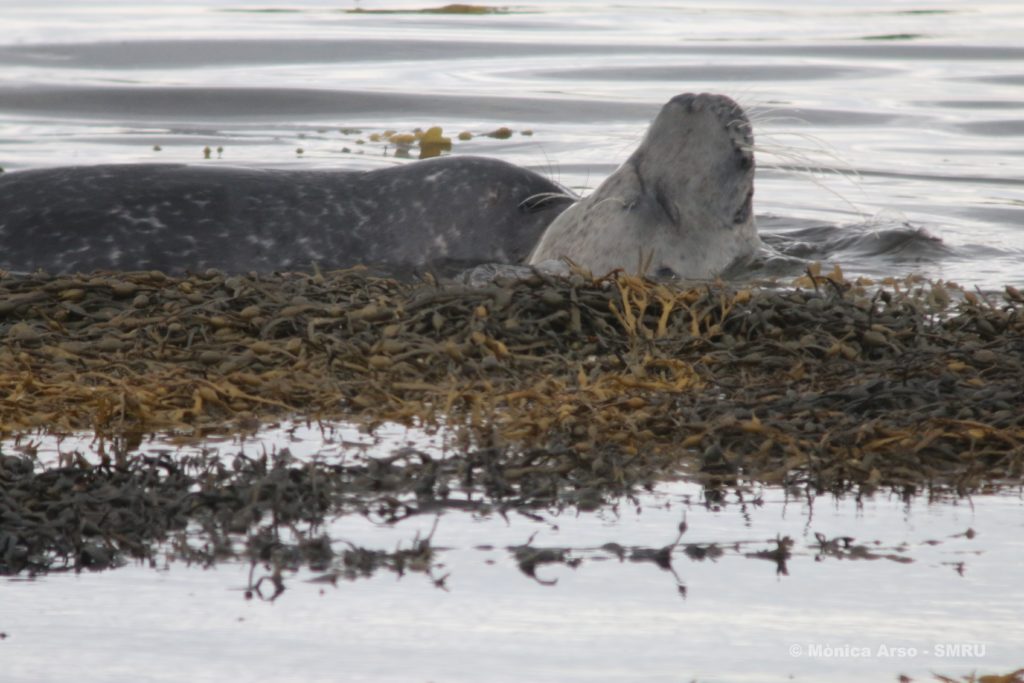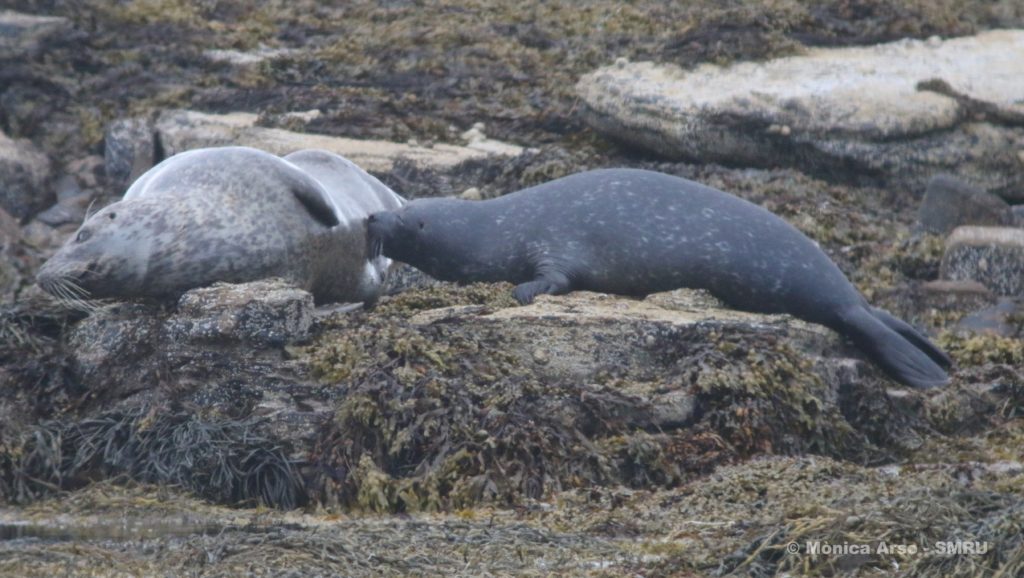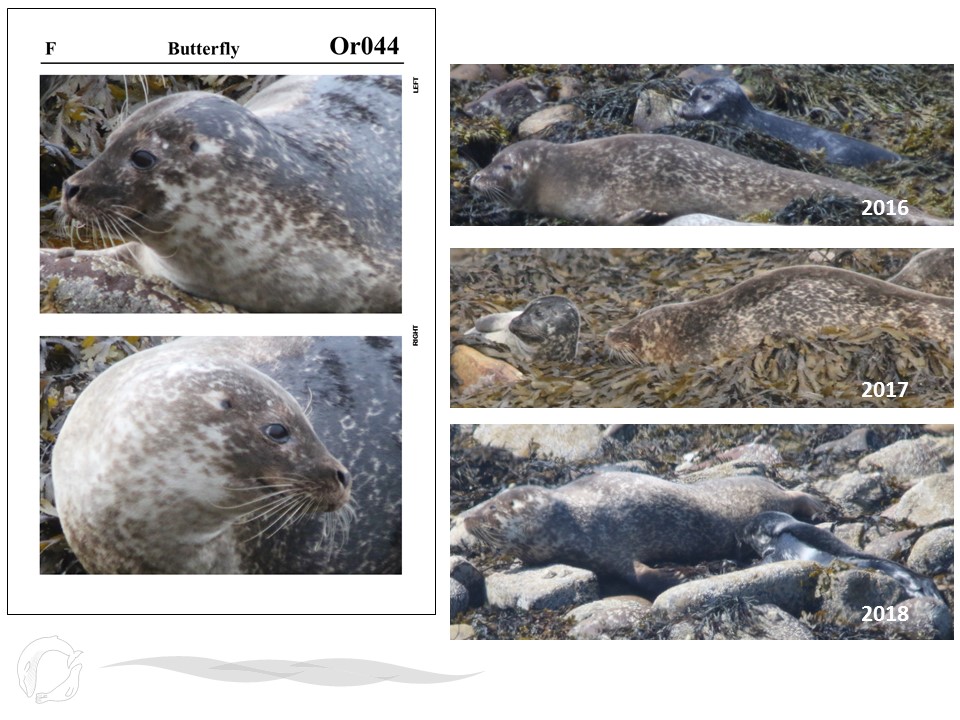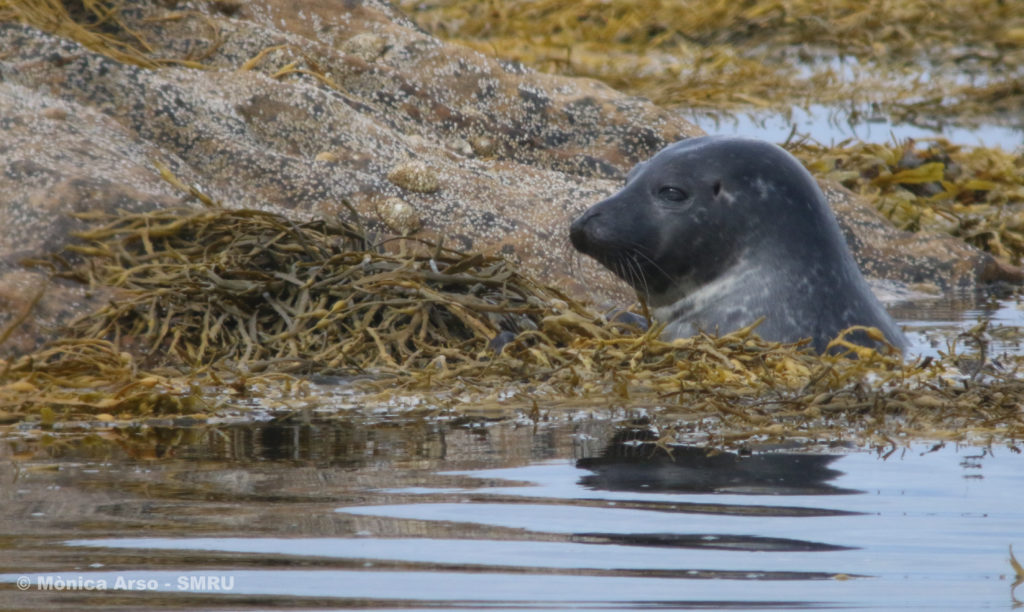Last weekend marked the end of another field season for the project. In Orkney, the vibe at the haulout sites changed significantly during the last week. Most of the pups were observed on their own, and thus likely to be fully weaned, and only a few mum-pup pairs were seen interacting. One of the few left was Or026, which was one of the last ones to pup this year around the 28th or 29th of June, as we explained in this other post.

The processing of the photographs from this year is still to be completed, with which we will attempt to identify every seal that has been photographed. Then we can figure out which females pupped this year, information that will be used to estimate birth rates in Orkney as well as at the other study sites. Going out to get the pictures keeps us busy enough, but there is still some basic data processing we have to do everyday after coming back from the field. The photographs have to be renamed with information on where the pictures were taken (because we have several sites that we monitor) and the trip number. Then we have to add the metadata associated to each photograph to a table, so that each row shows all the available information to each photograph. If the photograph shows more than one seal we need to state which seal are we talking about. We can then add information, when available, on whether a female was seen with a pup or alone, on whether suckling was observed, or whether we can tell if a seal is a male or a female from photographs of the genital area.

The pups that are weaned or almost weaned look quite massive compared to when they were born, and some of them are so similar in size to the seals born last summer that one needs to triple-check to make sure it is a pup and not a yearling.

Even though the identification of the females that have pupped this summer is still to be completed, we have recognized most of the females. Some of them have pupped for a third consecutive year, including Or094 in Burray, nicked-named “coliflower”, who had her pup on June 19th , and Or044, nicked-named “butterfly”, which is regularly seen in Widewall Bay.


While some pups have been seen suckling from their mums right up until almost the end of July, others that were born earlier in the season were already weaned by then. Some pups have to be a bit more pushy to get the female to lay on its side so that they can suckle. They do so my pushing their nose against the side of mum, until she turns around to get her belly exposed, as does mum Or045 in this video:
The pups that either have already been weaned or might just be spending more time on their own at the haulout sites might still try for a cheeky extra meal if that’s on the offer. In the video below, you can see female Or057 at the haulout sites together with her pup and some other pups. One of them, is trying to slowly approach the female from the the water, but it doesn’t seem that this tactic will work with Or057…
During the last few days of monitoring in Orkney we also noticed an increase in the number of seals starting their annual moult or well into it. More on this in the next post!

Written by Mònica
